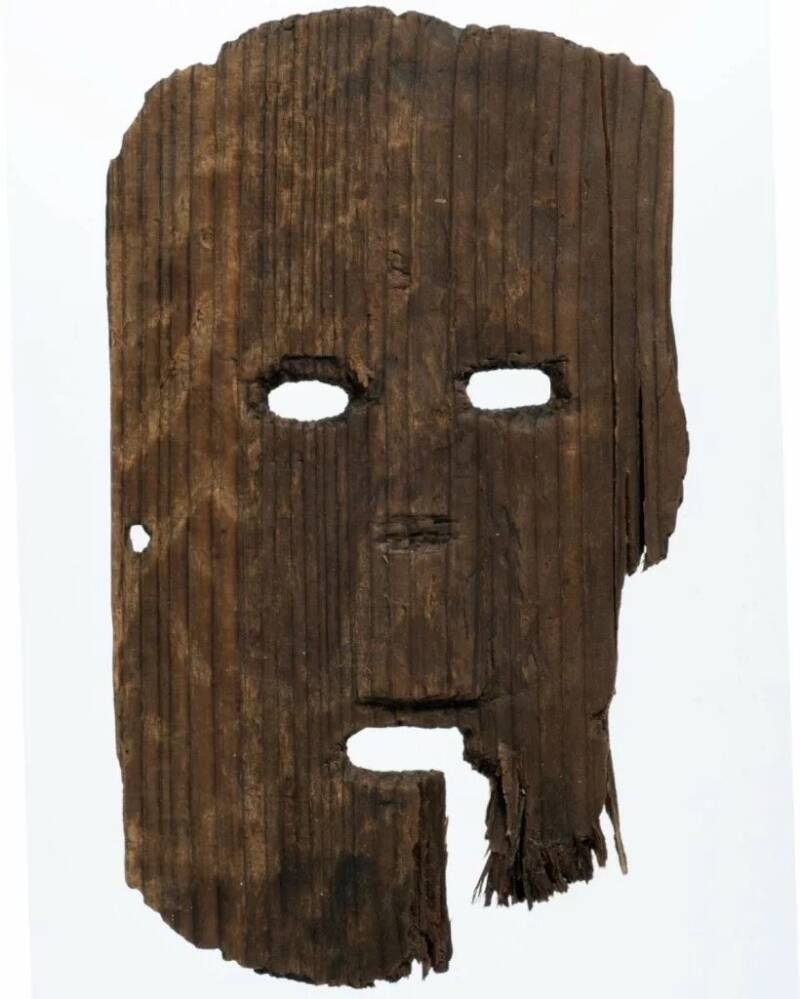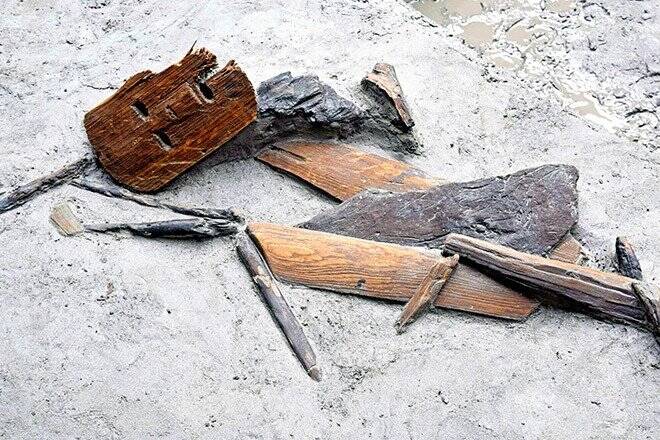The mask dates back to the Yayoi period between 300 B.C.E. and 300 C.E., a turbulent time when Japanese society transitioned from hunting and gathering to agriculture.

Osaka Center for Cultural HeritageThe mask is so heavy that it’s possible it was only displayed during ceremonies rather than actually being worn.
During preparatory excavations for the extension of the Osaka Monorail in Japan, archaeologists came across a number of stunningly well-preserved wooden objects. Of these, the most remarkable is a 1,800-year-old mask that was likely used in ancient rituals.
According to the Osaka Center for Cultural Heritage, the mask is made from cedar and resembles a human face, with two holes for the eyes and one for the mouth. It’s 11 inches long and seven inches wide, with a perforation on the side that might have once held string to tie the mask in place.
But whether the mask was actually worn by ancient people during their rituals is unclear. It’s so heavy that it may have been displayed instead, according to The Asahi Shimbun, and may have represented a deity.

Osaka Center for Cultural HeritageThe mask has a small hole on the side which may have been used to attach a string.
“I believe the mask represented a ‘spirit of a head,’ which was believed to be a god in the shape of a human and representing the authority of Okimi,” Kaoru Terasawa, director of the Research Center for Makimukugaku, Sakurai City, in Nara Prefecture, noted.
As Heritage Daily explains, the Okimi once led the Yamato Kingship, a group of powerful clans in present-day Nara Prefecture who reigned from the third century until the seventh century. Terasawa believes that their ceremonies likely inspired local leaders to use the mask at their rituals.
“I imagine that powerful people who were influenced by the ceremonies of the Yamato Kingship used the mask at festivals,” Terasawa said.
Masks like these seemingly played an important role in ancient Japan. As Heritage Daily notes, two other similar wooden masks from the same period have been found before. The most recent discovery strongly resembles a mask discovered among the Makimuku ruins in the Nara Prefecture.
But the 1,800-year-old mask isn’t the only ancient wooden object that archaeologists discovered while conducting excavations in preparation for the monorail extension. Alongside the ritual mask, archaeologists also discovered a wooden water bucket and a second charred, wooden object that resembles a gardening hoe 9.5 feet beneath the surface.

Osaka Center for Cultural HeritageIn addition to the mask, archaeologists also discovered a wooden bucket and a charred wooden object that appears to be a hoe.
The three objects are each a fascinating look into the Yayoi period, which stretched from 300 B.C.E to 300 C.E. This highly significant period of Japanese history saw the proliferation of wet-rice cultivation, which in turn led to a more agrarian society. Then, people started living together in permanent communities.
Though this transition from a hunter-gather society to an agricultural society may have made life easier for many people, it also introduced new concepts of social classes and power dynamics. Kyoto National Museum reports that people increasingly clashed over water and land ownership (as demonstrated by the discovery of bodies from this period with shields or with clear battle wounds) and certain people came to wield great power.
Whereas hunter-gatherers were more or less equal, agrarian societies set the stage for different kinds of social strata. Small chiefdoms emerged that were made of a ruler and his family, an upper class, and poor people, who deeply respected and worshiped their leaders. Often, the Kyoto National Museum notes, poor people would fling themselves to the ground when more powerful members of society passed them by.
What role the wooden mask played in these new social dynamics is unclear, though researchers hypothesize that it was meant to represent a god and the upper echelons of society. It will be temporarily displayed at the Museum of Yayoi Culture in Osaka Prefecture’s Izumi.
After reading about the 1,800-year-old wooden mask discovered in Japan, learn about the stunning 3,000-year-old gold mask that archaeologists discovered in China, which may have played a part in a secret society. Or, marvel at this 1,800-year-old intricately detailed iron face mask once worn by a Roman calvary soldier in Hadrianopolis.





